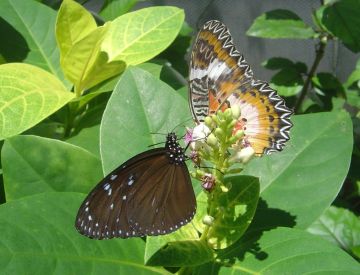
A butterfly with its colorful and bright wings, while romanticizing nature in its own rights, welcomes spring in the process bidding the long sticky summer goodbye.
Fluttering energetically over the lawn, these butterflies can do a lot besides adding color to mood and nature – it can well indicate in what state a particular ecosystem is!
The healthier the ecosystem, more you will find them in their flamboyant selves. Yes, butterflies are particularly sensitive to climate change – be it pollution or habitat loss.
Dedicating in the study of butterflies, moths and their habitats, Dr Martin Warren, chief executive of Butterfly Conservation, the UK charity explains,
Butterflies have annual lifecycles, they make the transformation from egg to caterpillar to chrysalis to adult every year. Their populations can build up or decline very quickly, which makes them far more responsive than plants or birds.
They are also sensitive to their thriving conditions. They need the right conditions every year for breeding, — once failed, there is no second chance, unlike birds in general.
Call the insects ‘habitat specialists’?
The climate-sensitive insects rely on one very specific set of conditions. The ‘specialist species’ as they are addressed to be, are struggling for survival when the ‘opportunistic’ generalists are boomingly spreading north.
While on one hand, the specialists are indicating the change in the regions’ climate, the generalists indicates the change by chasing their loving warmer weather.
So, a butterfly can act as a natural indicator of a particular region’s climate as well as at far-lands where the insects are found to chase their ways in. Hence, nature seems to be itself equipped with its “mood-swing indicators”.

